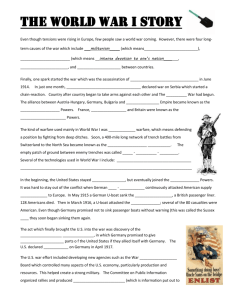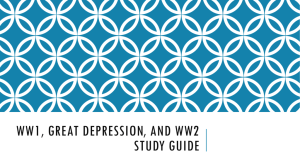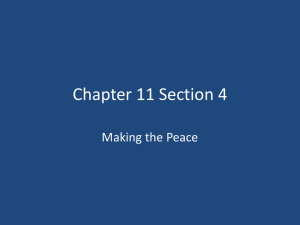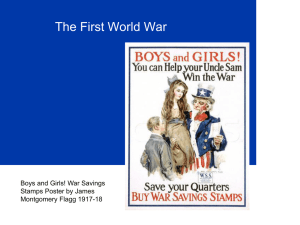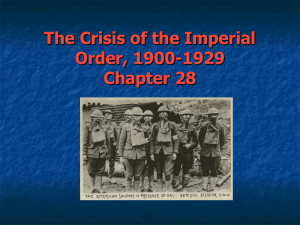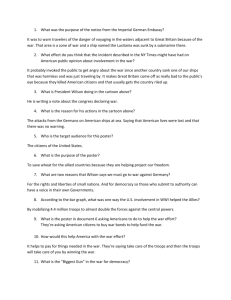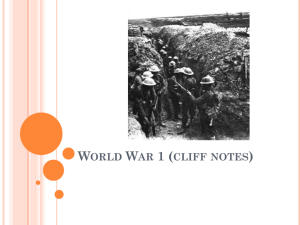US enters war in 1917 on the side of the Allies
advertisement
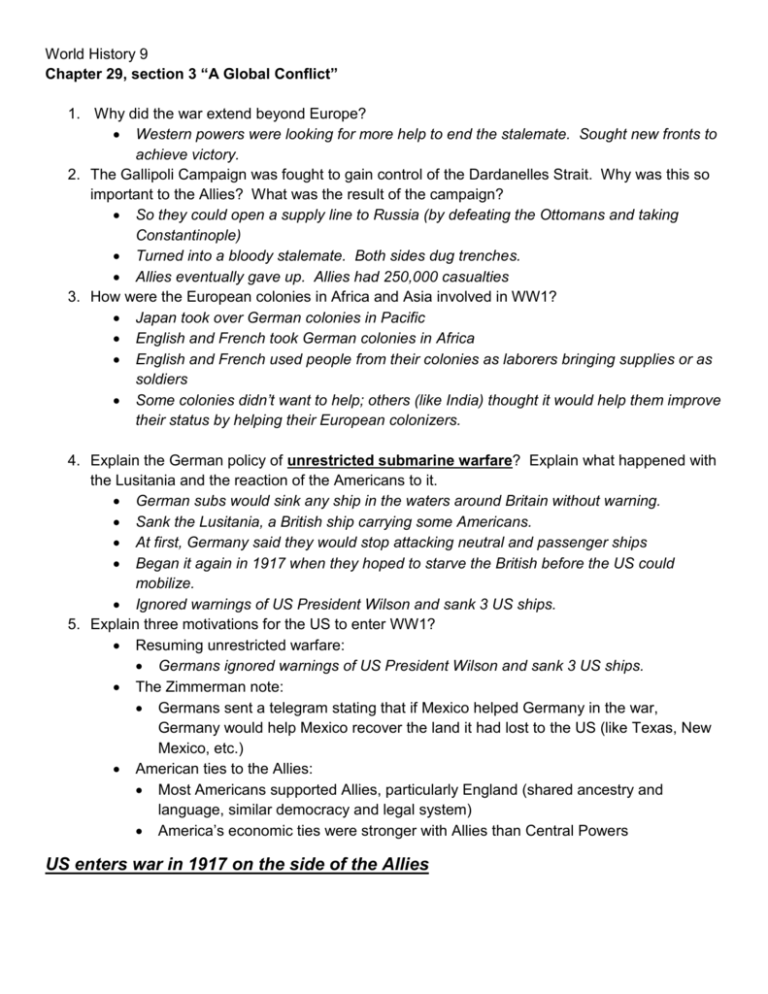
World History 9 Chapter 29, section 3 “A Global Conflict” 1. Why did the war extend beyond Europe? Western powers were looking for more help to end the stalemate. Sought new fronts to achieve victory. 2. The Gallipoli Campaign was fought to gain control of the Dardanelles Strait. Why was this so important to the Allies? What was the result of the campaign? So they could open a supply line to Russia (by defeating the Ottomans and taking Constantinople) Turned into a bloody stalemate. Both sides dug trenches. Allies eventually gave up. Allies had 250,000 casualties 3. How were the European colonies in Africa and Asia involved in WW1? Japan took over German colonies in Pacific English and French took German colonies in Africa English and French used people from their colonies as laborers bringing supplies or as soldiers Some colonies didn’t want to help; others (like India) thought it would help them improve their status by helping their European colonizers. 4. Explain the German policy of unrestricted submarine warfare? Explain what happened with the Lusitania and the reaction of the Americans to it. German subs would sink any ship in the waters around Britain without warning. Sank the Lusitania, a British ship carrying some Americans. At first, Germany said they would stop attacking neutral and passenger ships Began it again in 1917 when they hoped to starve the British before the US could mobilize. Ignored warnings of US President Wilson and sank 3 US ships. 5. Explain three motivations for the US to enter WW1? Resuming unrestricted warfare: Germans ignored warnings of US President Wilson and sank 3 US ships. The Zimmerman note: Germans sent a telegram stating that if Mexico helped Germany in the war, Germany would help Mexico recover the land it had lost to the US (like Texas, New Mexico, etc.) American ties to the Allies: Most Americans supported Allies, particularly England (shared ancestry and language, similar democracy and legal system) America’s economic ties were stronger with Allies than Central Powers US enters war in 1917 on the side of the Allies 6. Explain the concept of total war. In what ways was WW1 a total war? Include rationing and propaganda in your answer. What was the role of women in WW1? Total war – countries devoted all their resources to the war effort o Government took control of economy o Told factories what to produce; many factories making weapons and ammo o Everybody was put to work (so little unemployment) o Governments started rationing – people could only buy small amounts of items needed for war (included some foods, leather, soap, gasoline, etc.) o News was censored, so people would support the war (no bad news) o Governments used propaganda – one sided information designed to persuade, keep up morale, and support the war o Women utilized Replaced men in factories; made weapons and tanks Keep troops supplied with food, clothing, weapons Nurses Helped change views of what women were capable of 7. Explain the Russian withdrawal from WW1. Why did they withdraw? What treaty did they sign, when, and with whom? Unrest over war shortages lead Czar to step down By 1917, 5.5 million Russian casualties; Russian army refused to fight anymore November, 1917 – revolution puts a new Communist leader, V. Lenin, in power Lenin signs peace Treaty of Brest-Litovsk, ending the war between Russia and Germany 8. How did the withdrawal of Russia affect Germany’s strategy? Germany could now send all its troops to Western Front Got within 30 miles of Paris (the Marne River) 9. Explain how the Central Powers collapsed? Push to Marne exhausted German army Allies had 140,000 fresh US troops Second Battle of the Marne – 2 million more US troops helped Allies advance on Germans Bulgarians, then Ottomans surrendered Revolution in Austria-Hungary Germany troops mutinied Kaiser Wilhelm stepped down and Germany declares itself a republic 10. What was the armistice and when was it signed? Agreement to stop fighting, signed 11/11/1918 11. How was WW1 a new kind of war? New technologies Global scale More death and destruction than ever seen 12. What were four legacies of WW1? Huge amount of death and destruction 8.5 million dead 21 million wounded Huge number of civilian deaths due to starvation, disease, slaughter Devastating economic impact on Europe Total cost of $338 billion wiped out treasuries Destroyed farmland, homes, towns, etc Sense of disillusionment spread over survivors Feelings of insecurity and despair Peace treaty left anger and resentment
